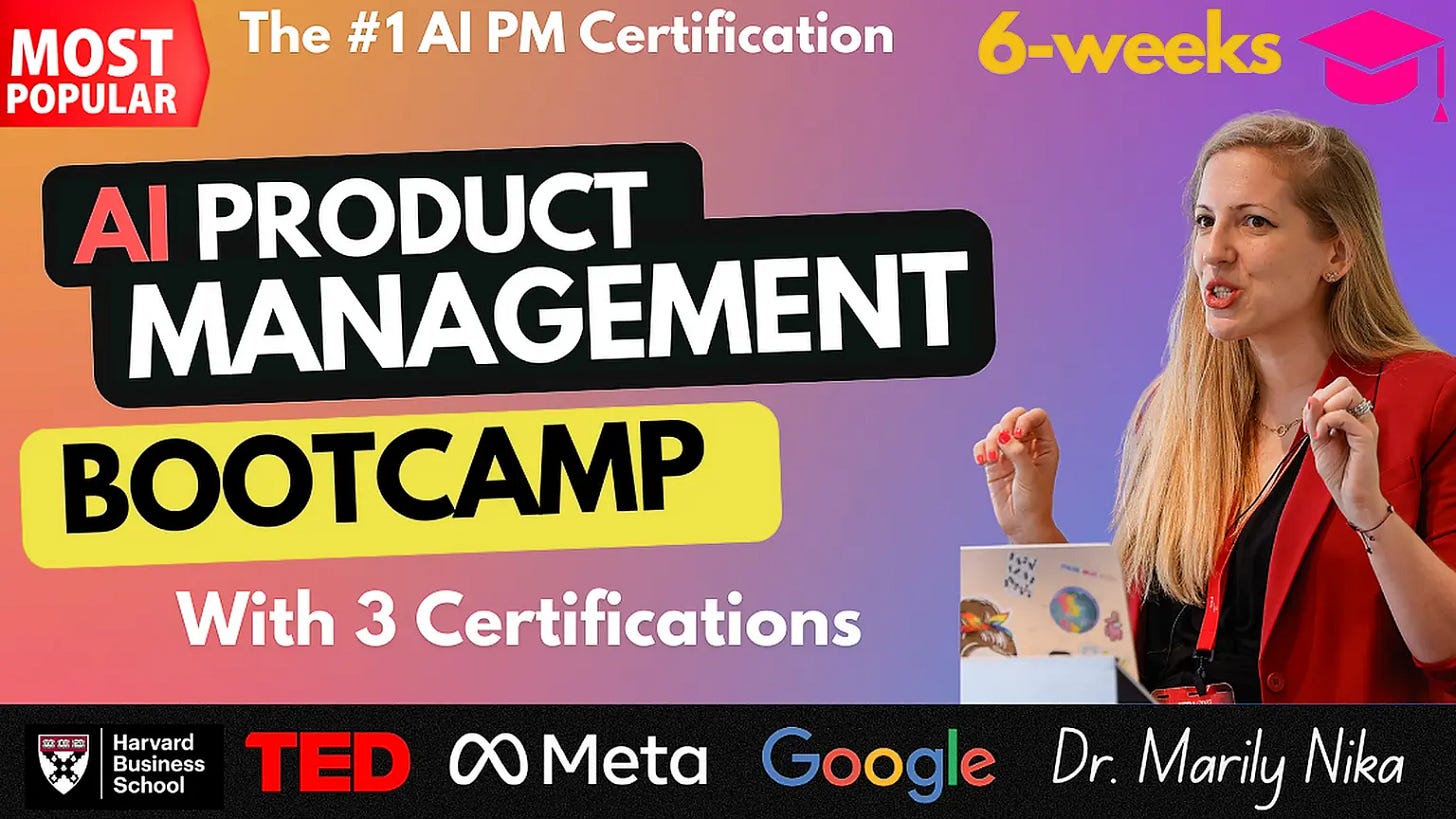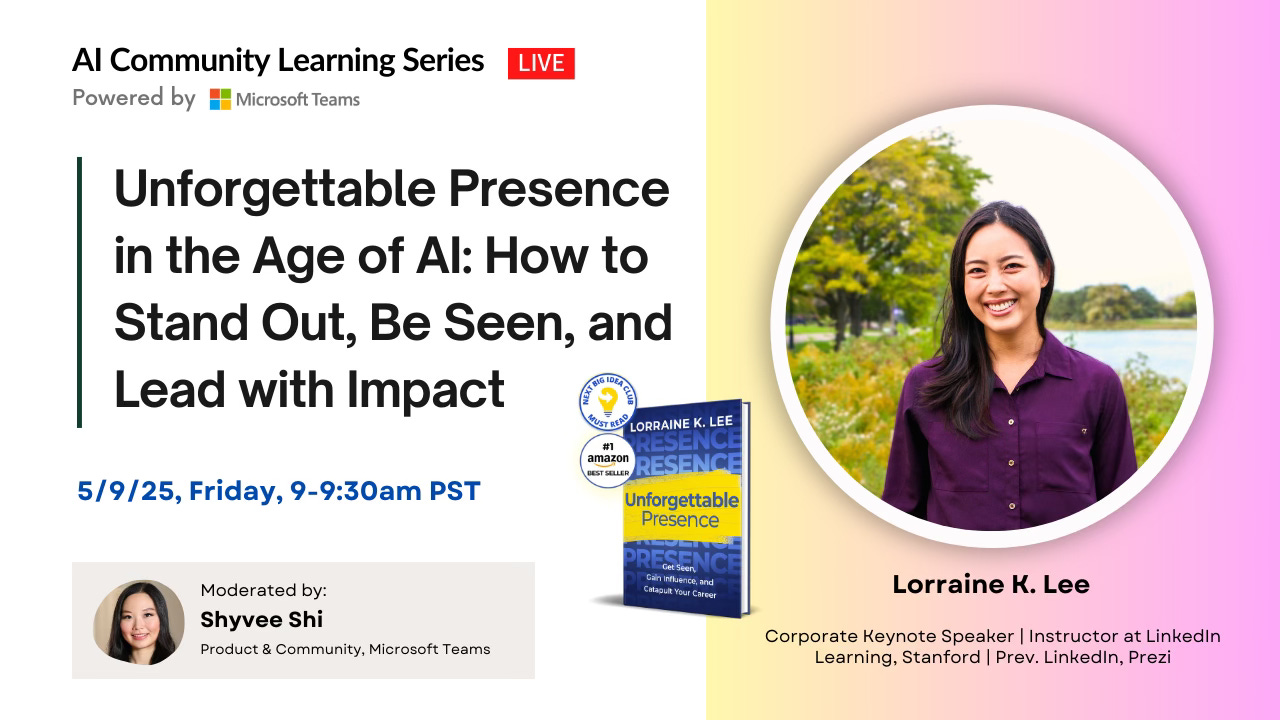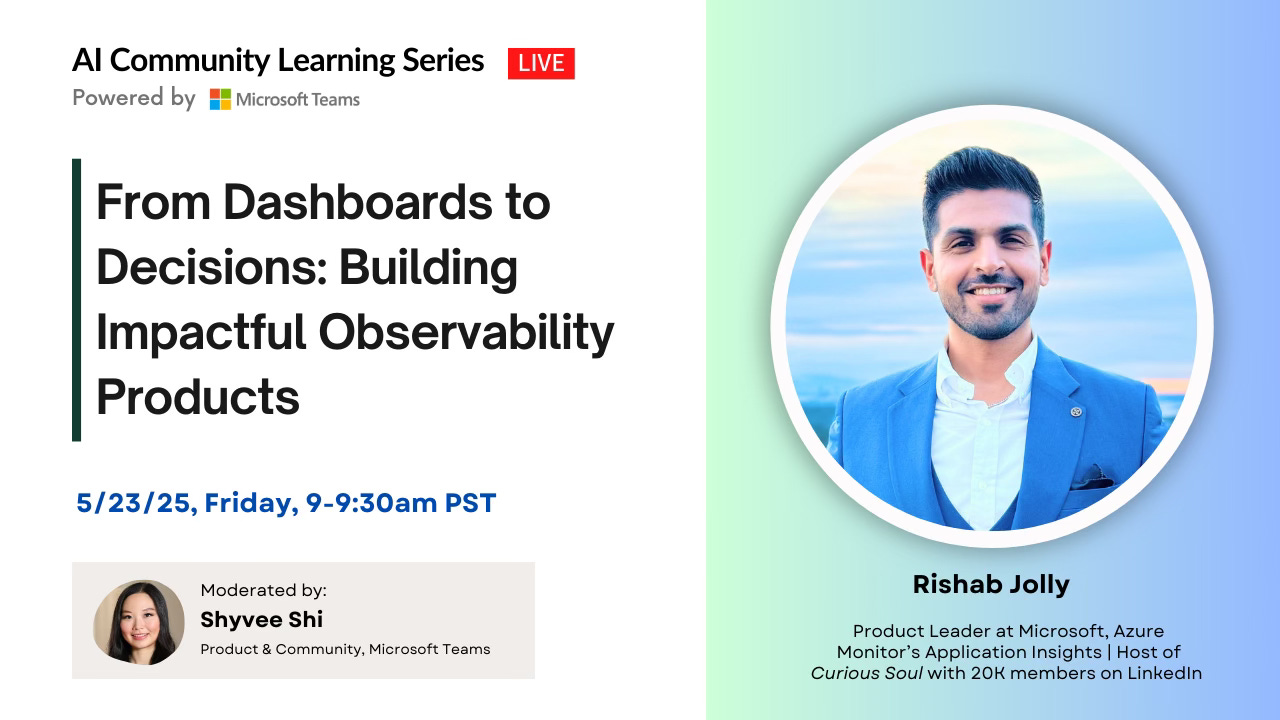Welcome to the latest issue of the AI Community Learning Series – a space to explore how leaders and innovators are reshaping industries with AI.In this session, Dr. Marily Nika shared practical frameworks, live demos, and personal insights on what it really takes to become an AI product leader today.
If you missed it, here’s the recording and our key takeaways from the conversation.
💡 1. There’s More Than One Way to Be an AI PM
Marily kicked off the session by redefining what it means to be an AI product manager — not as a single job, but a spectrum of roles:
AI-Enhanced PMs use GenAI tools to boost productivity.
AI-Experience PMs build user-facing AI features like recommendation engines or AI DJs.
AI-Builder PMs go deep into the backend, working with research scientists to develop models.
This framing offers an empowering message: No matter where you are, there’s a path into AI. You don’t need to be a data scientist to start creating meaningful AI products.
🧪 2. Experimentation is a Superpower
In a world flooded with new AI tools and models daily, it’s easy to feel overwhelmed. Marily’s advice? Block time every week to experiment. Try tools like NotebookLM, Zapier, or Perplexity. Form your own opinions. Build your personal “constellation” of tools that help you think, create, and ship.
Her mantra: “Don’t get distracted by the noise — get curious.”
Watch Marily demoed how to turn YouTube videos into study guides with NotebookLM, surface Reddit wisdom with Perplexity, and auto-post LinkedIn content using Zapier — see how AI can supercharge your everyday workflow.
🎯 3. The Model Isn’t the Product — The Experience Is
Through her live demos (yes, including a conversational AI podcast with interactive hosts!), Marily reminded us that building with AI isn’t about showcasing tech — it’s about delivering delight.
“AI is not the product. The model is not the product,” she emphasized. “The experience is the product.” This distinction is critical for PMs trying to avoid the “shiny object syndrome” and instead focus on solving real user problems.
🧭 4. You Don’t Need to Be an Expert — But You Do Need a Perspective
AI is evolving too fast for anyone to fully “keep up,” and that’s okay. What matters more is developing a point of view. Learn the fundamentals, test ideas, and build an informed opinion. Whether you’re pitching leadership or scoping your next feature, having a strategic perspective will set you apart.
Marily calls this “AI awareness” — a new, must-have skill for every product builder.
🌍 5. Be the Change Inside Your Org
Not every company is AI-native — and that’s an opportunity. Marily encouraged attendees to be proactive champions for AI experimentation. Draft a one-pager. Launch a small labs project. Tie your proposals to clear business outcomes.
“You don’t need permission to start,” she said. “You just need a use case and a little courage.”
📘 What’s Next?
Marily’s insights are just the beginning. If you’re looking to take the next step:
🎓 Join her next cohort of the AI Product Management Bootcamp on Maven (starting May 13) — a hands-on, high-impact course that’s trained 1,000+ PMs, founders, and builders. Use “SHYVEE” promo code for $100 off.
📖 Grab a copy of her new book, Building AI-Powered Products, published by O’Reilly — packed with frameworks, real-world case studies, and tools to upskill in today’s AI age.
Upcoming Events
Unforgettable Presence in the Age of AI: How to Stand Out, Be Seen, and Lead with Impact with Lorraine K. Lee
Fri, May 16, 2025, 9:00 AM - 9:30 AM PST
👉 RSVP Now
From Dashboards to Decisions: Building Impactful Observability Products with Rishab Jolly
Fri, May 23, 2025, 9:00 AM - 9:30 AM PST
👉 RSVP Now
From Data Curious to Data Confident: Level Up Product Analytics with AI
Fri, May 30, 2025, 9:00 AM - 9:30 AM PST
👉 RSVP Now









Solid insights from Dr. Nika! Love how this cuts through the AI hype and delivers real talk on product leadership. Definitely saving this for future reference.
I'd like to watch the demo and recording - however it is not available. The link opens a LinkedIn events page (https://www.linkedin.com/mynetwork/network-manager/events/) but this event is not listed. Is there a step I'm missing?